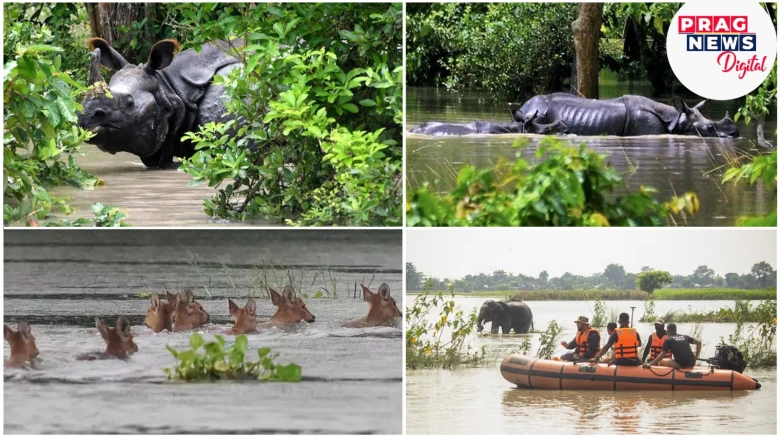Digital Desk: As of July 9, 2024, Kaziranga National Park stands as a poignant symbol of nature's resilience and devastation amidst Assam's severe floods. The park, renowned for its rich biodiversity, has been profoundly impacted by rising waters, inundating several camps across its expanse.
Amid the crisis, heroic rescue efforts have saved and treated a total of 238 animals, spanning a diverse array of species including Hog Deer, Swamp Deer, Indian Hare, Rhesus Macaque, Otter (Pup), Rhino, Elephant, Sambar, Jungle Cat, and Scops Owl. Tragically, 138 animals succumbed to the flood's fury, their deaths attributed to drowning, vehicle collisions, and other flood-related incidents.
The park's management, comprising dedicated wildlife experts and rescue teams, has evacuated animals from submerged camps in divisions such as Biswanath Wildlife and Nagaon Wildlife, among others. Despite ongoing challenges posed by fluctuating water levels at critical points like Dhansiri Mukh, Passighat, and Tezpur, rescue operations persist with unwavering determination.
Meanwhile, across Assam, the flood situation has escalated, impacting numerous districts and displacing approximately 18,80,783 people across 91 revenue circles and 3,154 villages. The Central Water Commission's latest data reveals alarming water levels above the danger mark at key rivers including the Brahmaputra at Neamatighat, Tezpur, Guwahati, and Dhubri, among others. This has prompted the establishment of 245 relief camps, offering shelter to 48,124 individuals grappling with the aftermath of inundation.
As Assam navigates through this calamitous period, efforts remain steadfast in providing relief and rehabilitation to affected communities and wildlife alike. The collaborative spirit between authorities, volunteers, and citizens stands resilient, underscoring the state's collective resolve in confronting and recovering from natural disasters.








Leave A Comment